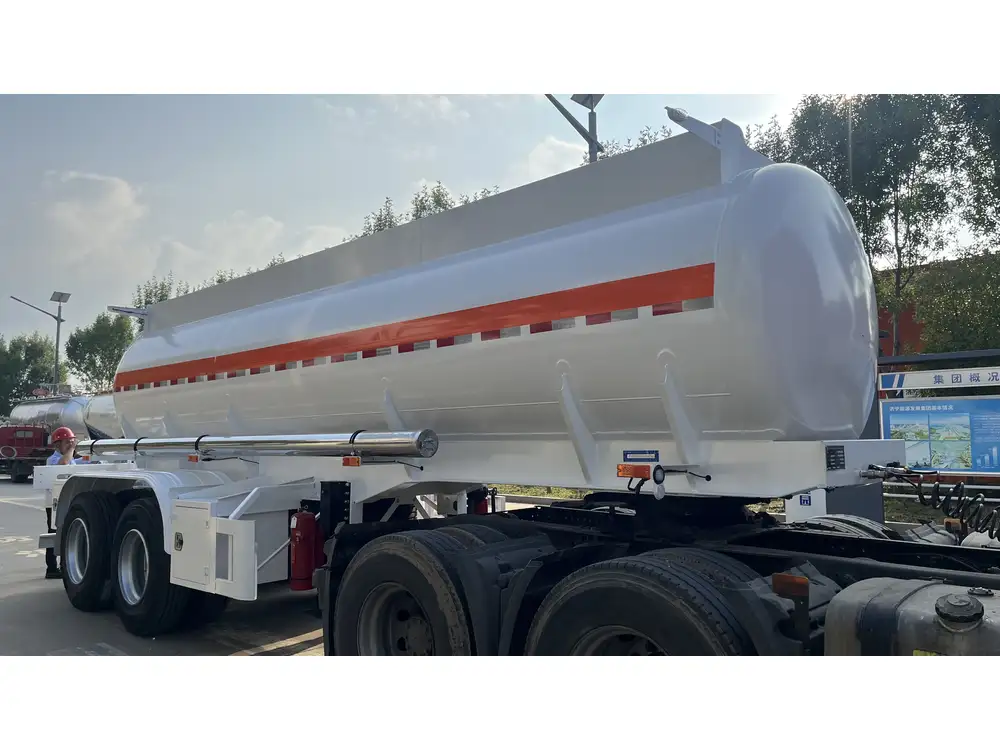When it comes to transporting livestock, particularly cattle, understanding the capacity of semi-trailers is crucial for producers and transporters alike. This capacity is dictated not only by the dimensions and weight limits of the semi-trailer but also by the well-being of the animals being transported. The question “how many cows can you fit in a semi-trailer?” requires careful examination of various factors that influence this capacity, ensuring that animal welfare is prioritized alongside operational efficiency.
Understanding Semi-Trailer Specifications
Dimensions and Weight Limits
Semi-trailers are designed with specific dimensions and weight limits to optimize transportation efficiency. Here’s a table encapsulating the general specifications:
| Trailer Type | Length (Feet) | Width (Feet) | Height (Feet) | Maximum Weight (Pounds) |
|---|---|---|---|---|
| Standard Livestock | 48 – 53 | 8.5 | 13.5 | 34,000 |
| Specialty Livestock | Up to 53 | 8.5 | 13.5 | 34,000 |

Legal and Compliance Considerations
Before loading the trailer, it is critical to understand the weight limits set by the Department of Transportation (DOT) and state laws. Overloading can result in fines, accidents, and legal repercussions. The gross vehicle weight rating (GVWR) must not exceed local regulations – this will directly impact how many cows can be safely transported in the trailer.
Determining Cow Space Requirements
Average Size of Cattle
Understanding how many cows can fit in a semi-trailer requires knowledge of the average size of the cattle being transported. In general, an adult cow (approximately 1,200 lbs) needs a minimum space of:
| Category | Minimum Space Required (Square Feet) | Comments |
|---|---|---|
| Calf | 8 | Young and smaller, easier to transport |
| Yearling | 14 | Needs more space as they grow |
| Adult Cow | 20 – 30 | Varies by breed and size |
| Bred Heifer | 25 – 35 | Requires space for comfort |

Space Allocation
Optimal space allocation not only enhances safety during transport but also reduces stress on the animals. For efficient loading and enough room for movement, it is often suggested to allocate 20 square feet per adult cow. Let’s break down the calculations based on average cow size and trailer dimensions.
Standard Livestock Trailer (53 feet long, 8.5 feet wide):
- Total Area: 53 x 8.5 = 450.5 square feet
- Estimated Capacity: 450.5 / 20 = ~22 cows
Specialty Livestock Trailer:
- Depending on design and spacing, it can hold a similar or slightly higher number, depending on maximum weight allowances.
Important Note: This number can vary based on the specific configurations of the trailer, the loading method, and the breed of cows.
Factors Affecting Cow Capacity
Weight Distribution
An even weight distribution within the trailer is vital for safe transport. Cattle should be loaded to ensure the trailer does not become unbalanced, causing safety hazards. Transporters must consider the forward, rear, left, and right balance to comply with road safety standards and minimize the risk of injury to both the cattle and the driver.

Ventilation and Animal Welfare
Proper ventilation is necessary to maintain air quality and temperature, thereby promoting the welfare of the cattle. Overloading a trailer could lead to inadequate airflow, potentially leading to heat stress and inadequate oxygen.
Destination Considerations
Depending on the duration of transportation, it’s crucial to evaluate the distance to the destination as it directly affects the comfort levels of the cattle. Long-distance travel might necessitate more space and fewer animals per load, particularly in hotter climates.
The Importance of Handling Capacity Correctly

Financial Implications
Transporters must balance the number of cows transported against operational costs. Each additional cow means more profit, but only if it doesn’t compromise animal welfare or violate regulations. Mistakes in capacity can lead to excess costs due to legal fees or penalties, thus impacting overall profitability.
Customer Demand and Market Conditions
Understanding market dynamics can help inform loading decisions. In times of high demand, getting the most out of each load is essential. Conversely, during calm market periods, prioritizing cows’ well-being may take precedence.
Best Practices for Loading Cows into a Semi-Trailer

1. Pre-Loading Inspection
Inspect the trailer prior to loading. Ensure that there are no sharp edges, protrusions, or damaged areas that could injure the cattle. Proper lighting and flooring can also significantly impact loading efficiency and cow comfort.
2. Grouping and Sorting
Sort the cattle by size and temperament before loading. Grouping similar-sized cows together can streamline the loading process and create a less stressful environment for the animals.
3. Ramp Design and Straight Loading
Utilizing a secure, non-slip ramp can make loading easier. Ensure that the ramp complies with standards to prevent injury during boarding. Also, using straight loading methods can significantly reduce stress for cattle, improving overall transport outcomes.

4. Monitoring During Transport
Implement proper monitoring techniques during transport. This can include periodic checks to assess the well-being of the cattle, ensuring they have adequate space and ventilation.
Conclusion: Enhancing Transport Efficiency while Ensuring Welfare
The capacity of semi-trailers for transporting cattle hinges on several factors, including trailer specifications, cow sizes, and legal regulations. By understanding these elements, one can accurately estimate how many cows can fit in a semi-trailer while ensuring animal welfare standards.
Ultimately, the focus should always be on achieving a balance between operational efficiency and ethical responsibility. Improved practices in loading, monitoring, and compliance can lead to better outcomes both for the animals and the transportation businesses involved. Recognizing the nuances of livestock transport promotes not just compliance with regulations but also fosters a commitment to best practices that prioritize the welfare of animals during their journey.
As a final note, continual education and awareness of updated laws and best practices are paramount in ensuring that livestock transporters maintain both efficiency and compliance in their operations.



